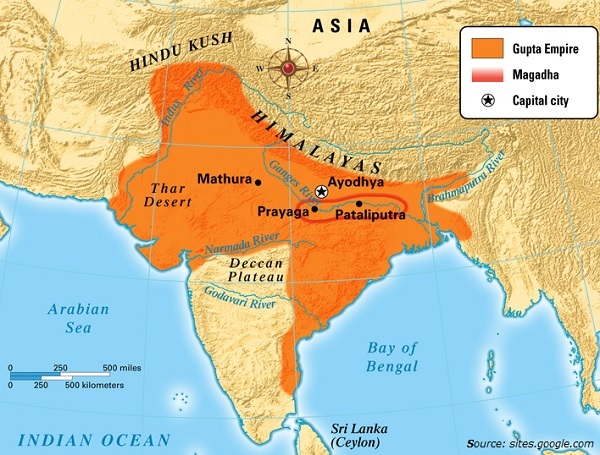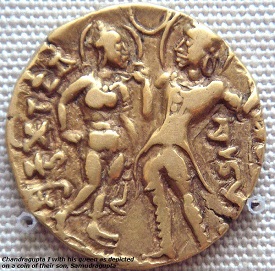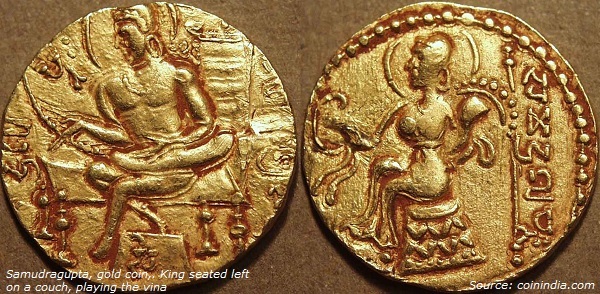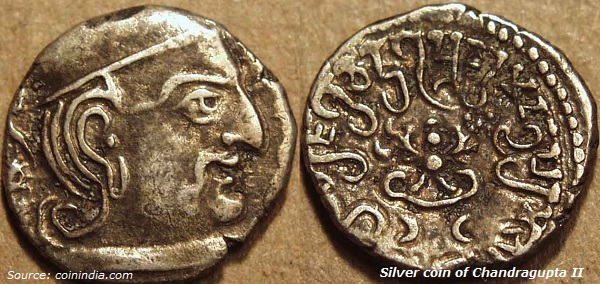
- Ancient Indian History - Home
- Study of Indian History
- Writing of Ancient Indian History
- Imperialist Historiography
- Historiography Nationalist Approach
- Marxist School of History
- Sources of Ancient Indian History
- Archaeological Sources
- Geographical Background
- Geography in Ancient Literature
- Stone Age Cultures
- Mesolithic Culture
- The Neolithic Age
- Chalcolithic Period of India
- Chalcolithic Culture In India
- Harappan Civilization
- Harappan Town Planning
- Harappan Crafts & Industries
- Harappan Culture
- Harappan Religion
- Harappan Chronology
- Vedic Civilization
- Vedic Society
- Vedic Politics
- Vedic Religion & Philosophy
- The Aryan Invasion
- Later Vedic Age
- Social System after Vedic Age
- Achievements of Indian Philosophy
- Evolution of Jainism
- Evolution of Buddhism
- Alexander’s Campaign in India
- Maurya Dynasty
- Kalinga War & its Impact
- Society & Economy during Mauryas
- Mauryan Governance
- Early History of South India
- Age of Smaller Dynasties
- Literature of Satavahana Period
- Society of Satavahana Period
- Economy of Satavahana Period
- Technology of Satavahana Period
- Chola Dynasty
- Pandya Dynasty
- Chera Dynasty
- Period of Foreign Invaders
- Gupta Period
- Decline of Guptas
- Governance of Gupta Period
- Literature of Gupta Period
- Economy in Gupta Period
- Science & Tech of Gupta Period
- India after the Gupta Period
- Period of Harsha
- South India during the Harsha Period
- Kadamba Dynasty
- History of Kamarupa
- India after Harsha
- Gurjara Pratiharas
- Palas of Bengal
- Rashtrakutas of Deccan
- Literature after the Harsha Period
- Society after the Harsha Period
- Economy after the Harsha Period
- Religion after the Harsha Period
- References & Disclaimer
Ancient Indian History - Gupta Period
North India came under the rule of several foreign people, such as the Yavanas, Kushans, Sakas, Parthians, etc. They began to settle in north-west India from the first century B.C. onwards.
Foreign rulers came to India due to the turbulent condition in central Asia.They adjusted themselves with Indian culture, and introduced some new elements in India.
-
Three big political powers emerged in India between the 1st century B.C. and 3rd century A.D., which played an important stabilising factor over large regions. They were −
Satavahanas in the Deccan,
Kushanas in the north, and
Sakas in the west.
In the mid of 3rd century A.D., the empires of the Satavahanas and Kushanas came to an end.
Gupta Dynasty
A new dynasty, known as Gupta, emerged in north India. They made a permanent impact on Indian history by building up a large empire. They have firmly established several trends of Indian culture like the Mauryas a few centuries earlier.
Apart from political might and strength, the Gupta kings were also known for their great achievements in the field of science, art, culture, and literature.
The Allahabad pillar inscription of Samudragupta mentions maharaja Srigupta and maharaja Ghatotkacha as his ancestors. But we do not know much about the early Guptas.
I-tsing, a Chineses traveler, came to India between A.D. 671 and 695. He mentioned Srigupta as the builder of a temple at Gaya for the Chinese pilgrims about 500 years before his time.
The king, Srigupta, has been identified as the first Gupta king mentioned in the Allahabad pillar inscription.
Puranas also mentioned that the early Guptas controlled the area along the Ganga (the middle Gangetic basin), Prayag (Allahabad and surrounding region), Saketa (Ayodhya region), and Magadha.
Ghatottotkacha succeeded his father Srigupta. He was also referred as the Maharaja in Gupta records.

Chandragupta-I
Chandragupta-I succeeded his father Ghatottotkacha in A.D. 320.
Chandragupta-I was considered to have laid the foundation of the great Gupta Empire. He was married to a Lichchhavi princess Kumaradevi. The Lichchhavis were related to Gautama Buddh.

The Lichchhavis were an old and established Ganarajya and quite powerful and still being respected in north India.
The marriage alliance of Chandragupta-I was important for his political career as is proved by the coins Chandragupta I. These coins portray the figures of Chandragupta and Kumaradevi with the name of the Lichchhavis.
In the Allahabad inscription, Samudragupta son of Chandragupta-I and Kumaradevi, proudly called himself Lichchhavis Dauhitra i.e. son of the daughter of Lichchhavis.
The Gupta era was started with a coronation of Chandragupta-I in A.D. 320. He was the first Gupta king to adopt the title Maharajadhiraja and issued gold coins. Chandragupta-I introduced a new era called Gupta era.
Samudragupta
Samudragupta succeeded his father Chandragupta-I about A.D. 340. He earned a reputation as one of the greatest kings and conquerors. He was chosen by his father as his successor because of his qualities that would make him into a good king.
The Allahabad pillar inscription gives a detailed account of the career and personality of Samudragupta.
Harishena one of the officials composed the inscription and engraved on the Ashoka's pillar at Allahabad.
Samudragupta was a great military general. He had a long list of the kings and rulers whom he defeated and subdued as a part of his military achievements. He uprooted nine kings and princes from the Aryavarta and annexed their kingdom.
Campaign of southern India was the most important campaign of Samudragupta
Altogether twelve kings and princes of the south (dakshinapatha) are listed in the inscription.
During the campaign of southern India, he adopted the policy of first capturing the kings, then releasing them from captivity, and then reinstalling them as kings in their territory. By showing royal mercy, he won their allegiance.
Samudragupta proceeded for his south Indian campaign, through the eastern and southern parts of Madhyadesha to Orissa and then advanced along the eastern coast and reached Kanchi and beyond and returned to his capital by way of Maharashtra and Khandesh.
Samudragupta performed Ashvamedhayajna after his several conquests and issued gold coins depicting the sacrificial horse and bearing the legend, which conveying that he performed the Ashvamedha sacrifice.
The Allahabad pillar inscription also lists fourteen kingdoms bordering his kingdom. These rulers paid tribute followed his orders and showed their obedience by attending his court.
These were located in eastern Rajasthan, northern Madhya Pradesh, Assam, and Nepal. Further, some forest kings (atavika-rajas) are mentioned whom Samudragupta had made his Paricharaka (helpers).
Other political powers listed in the inscription are such as Kushanas, Sakas, Murundas as well as Simhalas (Sri Lanka) and inhabitants of other islands. These rulers sent embassies to Samudragupta's court.
Meghavarna, the king of Sri Lanka, sent an embassy to Samudragupta for his permission to build a monastery and a guest house for Buddhist pilgrims at Bodh Gaya.
Samudragupta was a versatile genius. He was called as Kaviraja i.e. the king of poets. He was proficient in war and sastras as well.
The Allahabad pillar inscription calls him a great musician. This is also confirmed by his lyricist type of coins, which shows him playing veena (lute).

Samudragupta patronized learned men in his court and appointed them as his ministers.
Samudragupta died in about A.D. 380 and was succeeded by his son Chandragupta II.
Chandragupta II
Chandragupta II was the son of Samudragupta and Dattadevi and he was chosen by his father as his successor.
The Gupta Empire reached its highest glory, both in terms of territorial expansion and cultural excellence under Chandragupta II.
Chandragupta II had inherited a strong and consolidated empire from his father Samudragupta.
Chandragupta II had established a matrimonial alliance with Vakatakas by marrying his daughter Prabhavatigupta with Rudrasena-II of the Vakataka dynasty.
Chandragupta-II made an alliance with the Vakatakas before attacking the Sakas so as to be sure of having a friendly power to back him up in Deccan.
Prabhavatigupta acted as a regent on behalf of her two minor sons after the death of her husband Rudrasena II.
Chandragupta-IIs victory over the mighty Sakas dynasty was his foremost success. The annexation of Sakass kingdom comprising Gujarat and part of Malwa strengthened the Gupta Empire, but also brought it into direct touch with western sea ports. This gave a great motivation to foreign trade and commerce.
Ujjain, a major centre of trade, religion, and culture became the second capital of the Gupta Empire after the conquest.
After the victory over Sakas, Chandragupta-II adopted the title of Vikramaditya.
Chandragupta-II issued dated silver coins to commemorate his victory over Saka kshatrapas.

The Mehrauli iron pillar inscription records portray a king named Chandra.
The king Chandra is generally identified as Chandragupta-II. This would mean his kingdom extended from Bengal to the north-west frontiers.
Chandragupta-II's reign is remembered for his patronage of literature and arts and for the high standard of artistic and cultural life.
Kalidas, the great Sanskrit poet was a member of Chandragupta-IIs court.
Fa-Hien, the Chinese Buddhist pilgrim visited India between A.D. 405 and A.D. 411. He visited for collecting Buddhist manuscripts and text and studying at Indian monasteries.
Kumaragupta-I
Chandragupta-II died about A.D. 413. His son Kumaragupta became the next king.
Kumaragupta ruled for more than forty years. He performed an Ashvamedha sacrifice; though his military achievements are not known.
Kumaragupta issued Ashvamedha type of coins like his grandfather, Samudragupta.
The epigraphic records show that he organised the administration of vast empire and maintained its peace, prosperity, and security for a long period of forty years.
The Gupta Empire was challenged by the Pushyamitras at the end of Kumaragupta's reign.
Pushyamitras were living on the banks of the Narmada.
Skandagupta was the son of Kumaragupta-I.
Skandagupta
Kumaragupta-I died in A.D. 455. His son Skandagupta became the next king.
Skandagupta's reign seems to have been full of wars. He struggled with his brother Purugupta.
Hunas were the greatest enemies of Guptas empire during this period.
Hunas were a ferocious barbarian horde. They lived in central Asia.
Skandagupta successfully defeated the Hunas. So they did not dare to disturb the Gupta Empire for half a century. Though they continue to disconcert Persia during this period.
The important event of Skandagupta's reign was the restoration and repair of the dam on Sudarsana Lake after 8 hundred years of construction. It was built during Chandragupta Maurya's reign.
Sudarsana Lake was also repaired previously during the reign of Saka kshatrapa Rudradaman I.